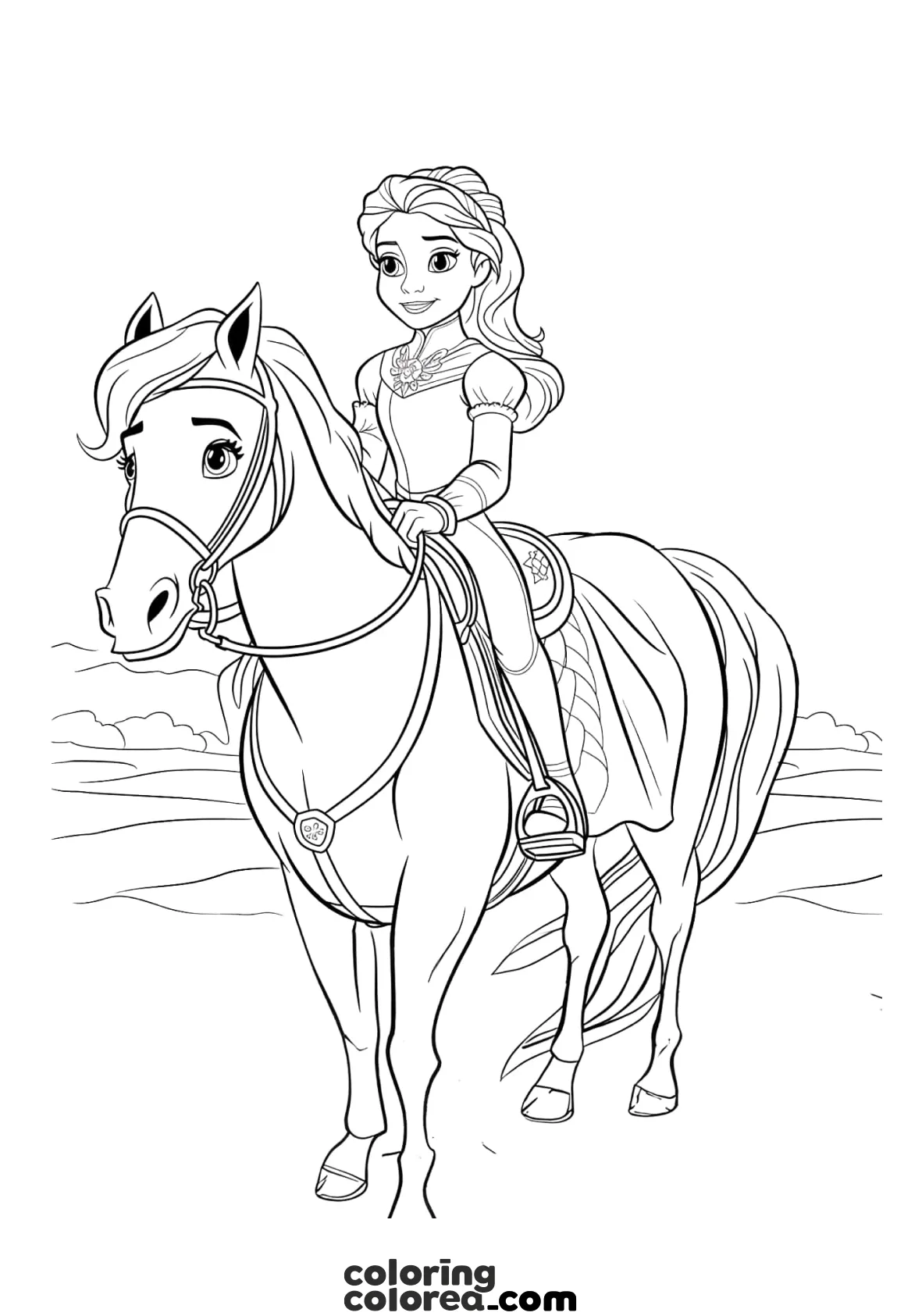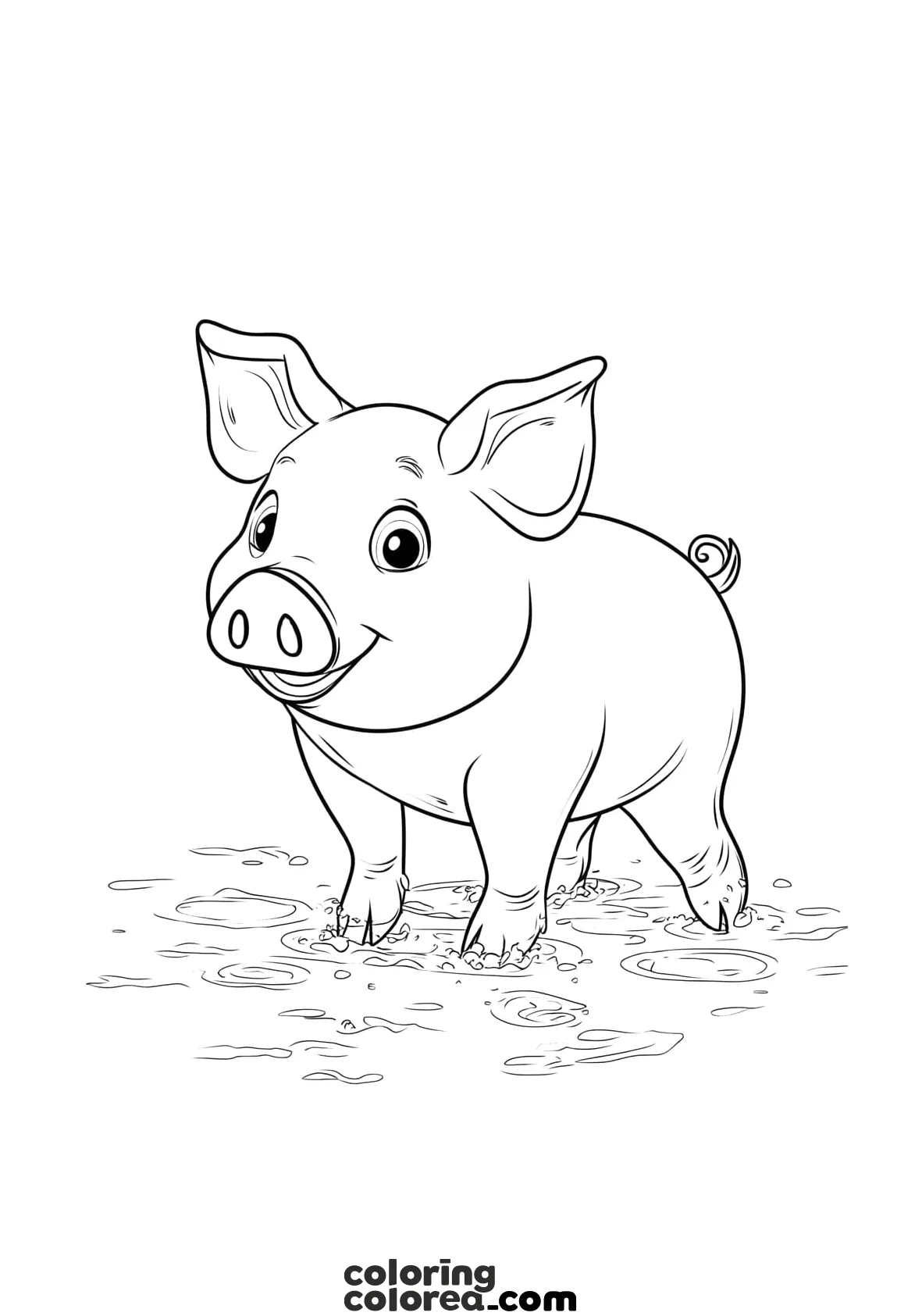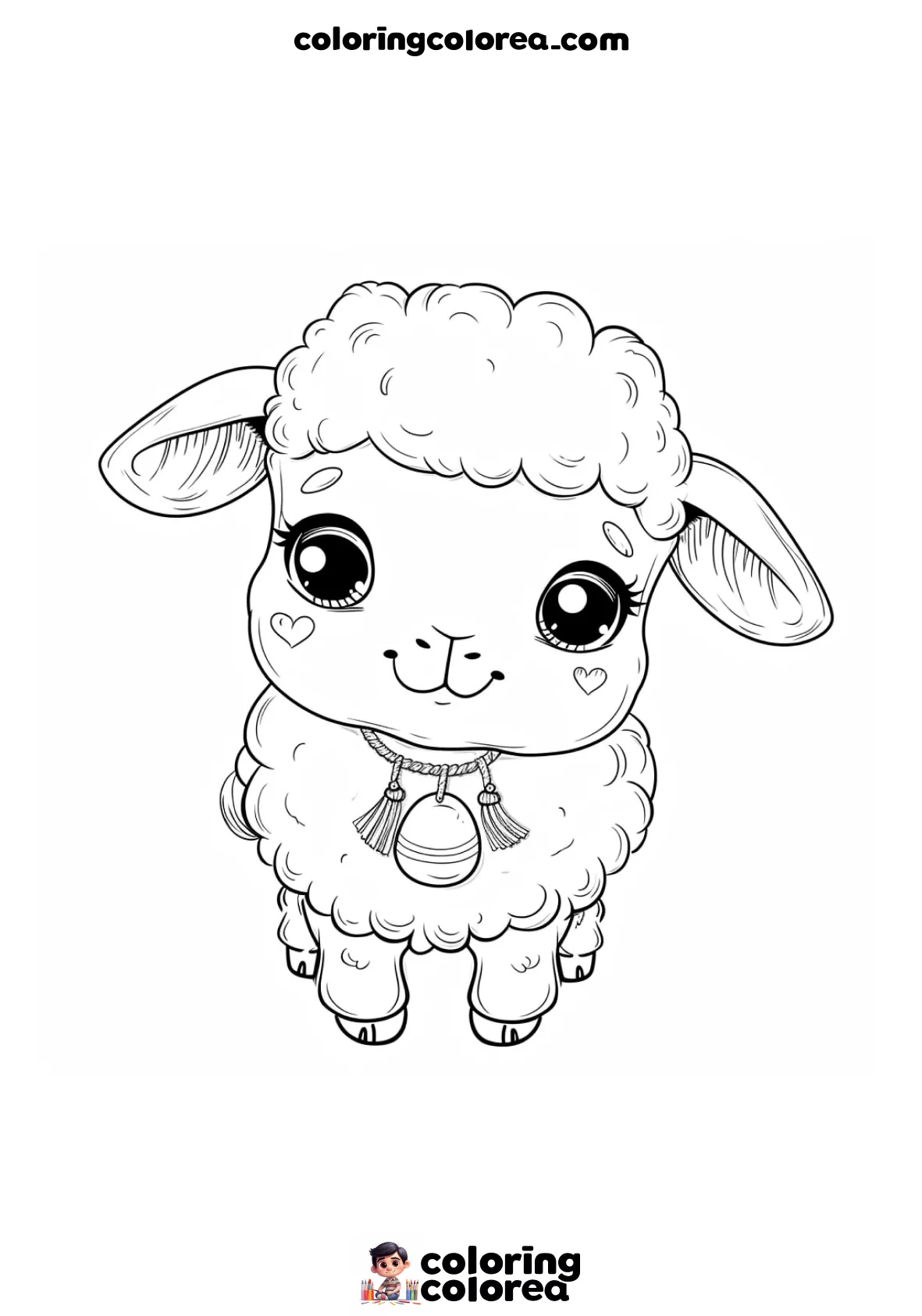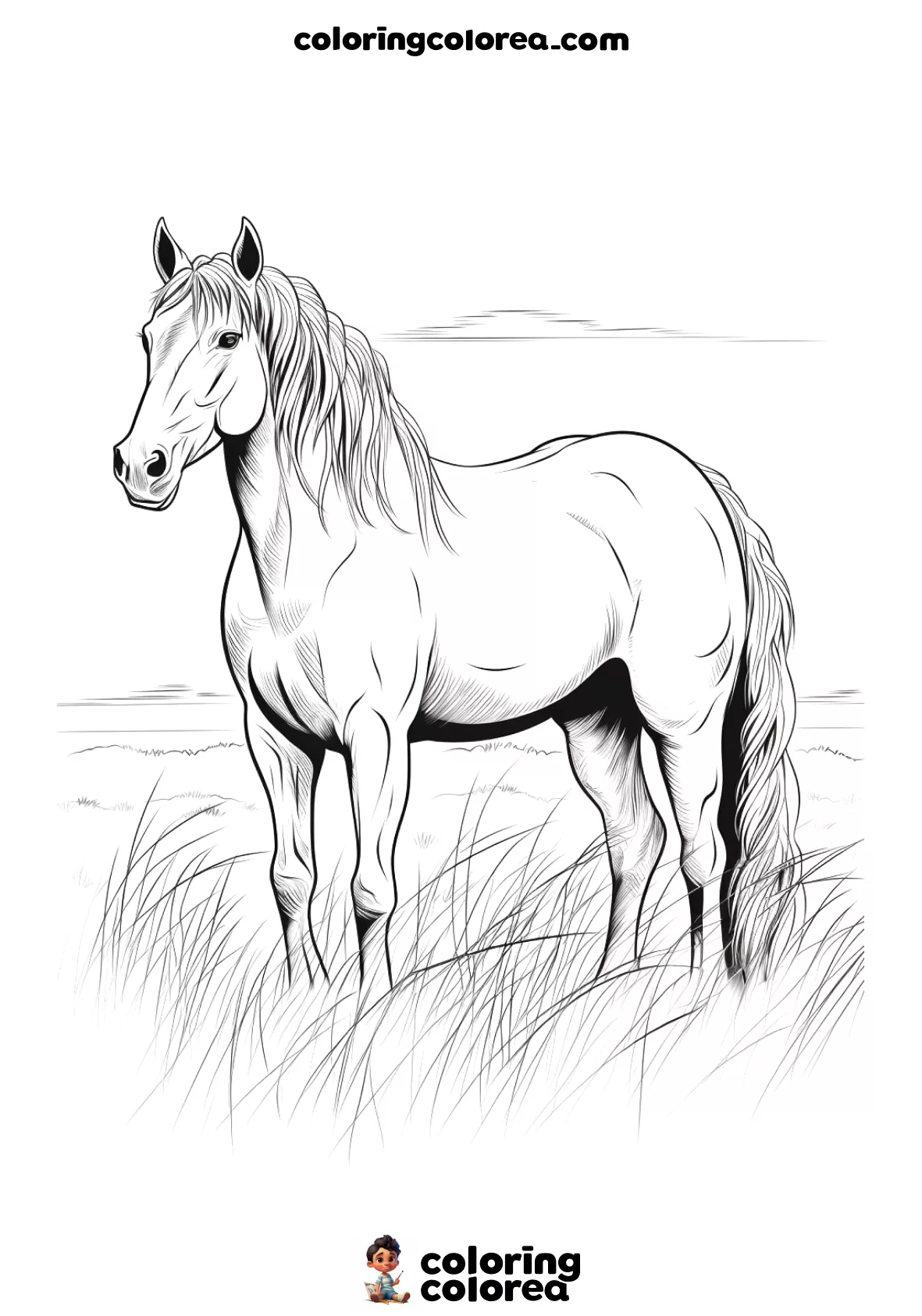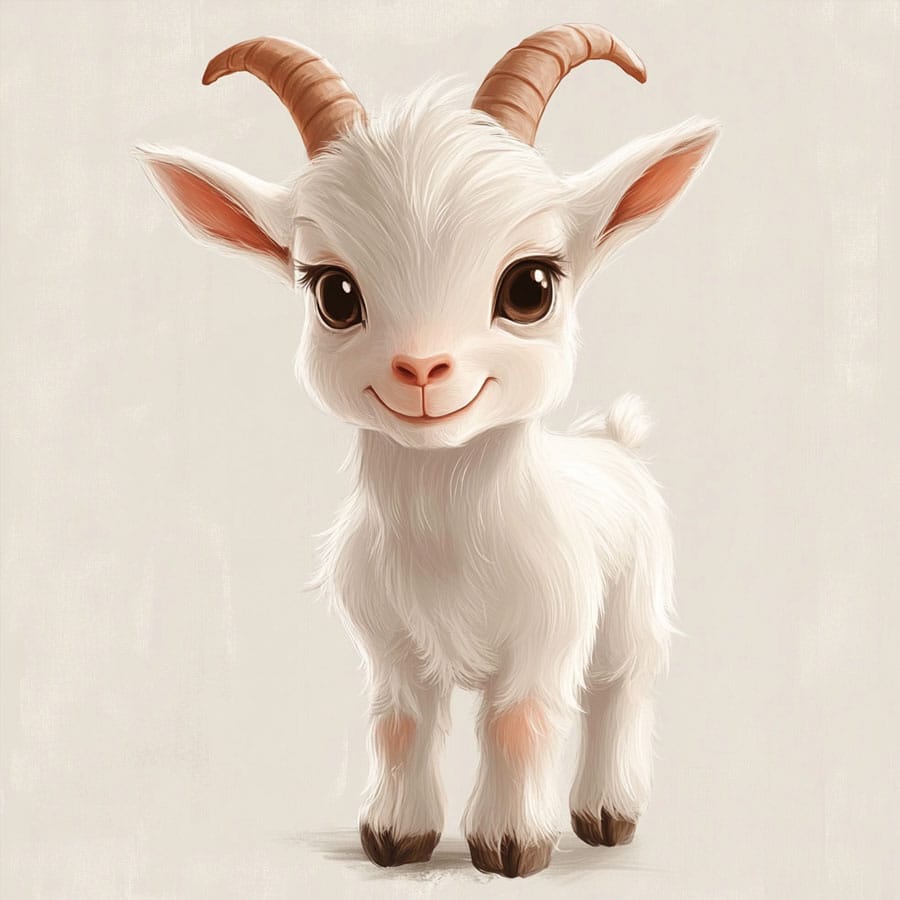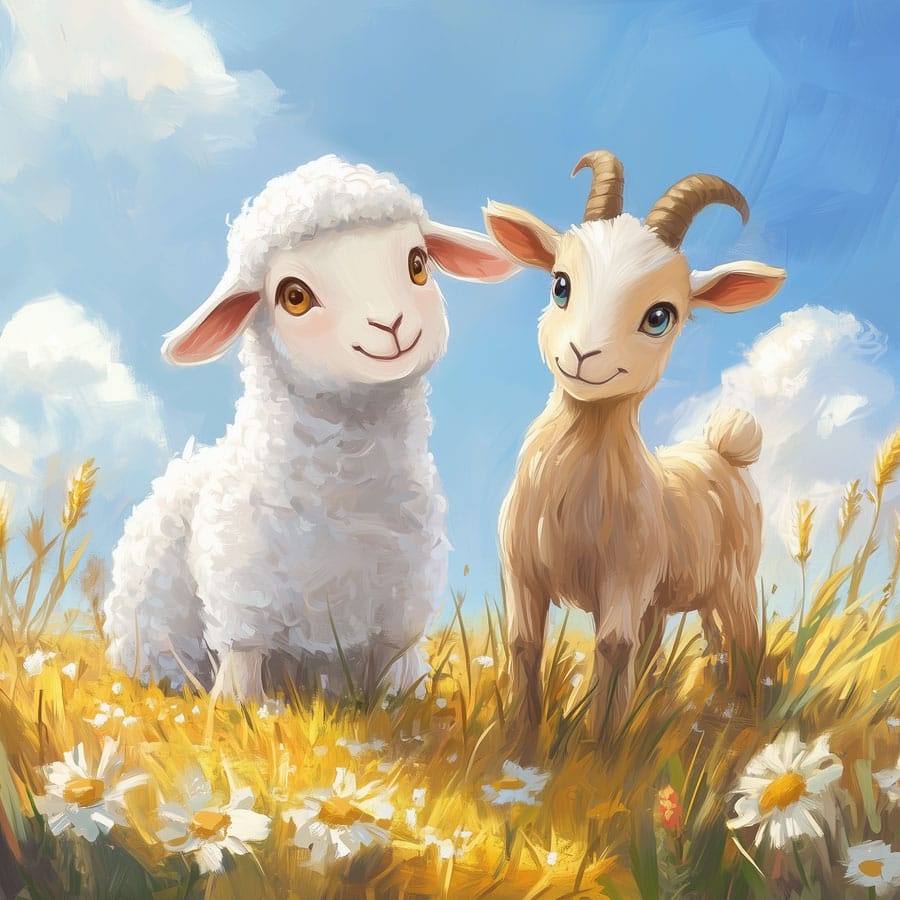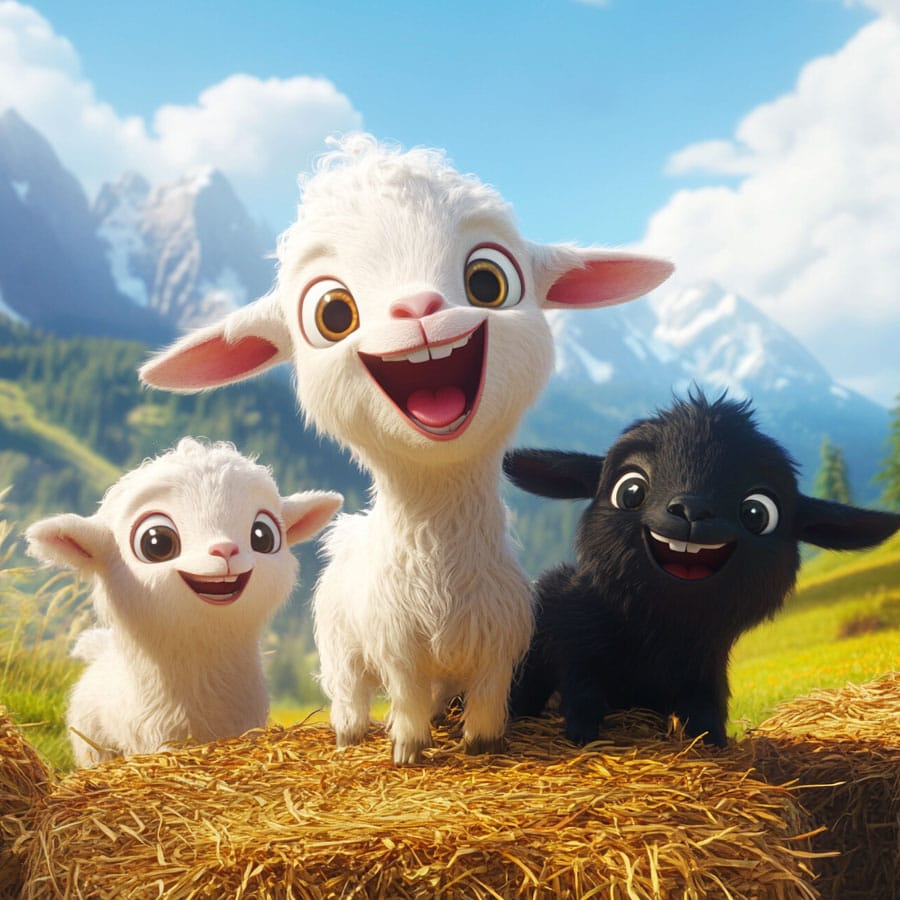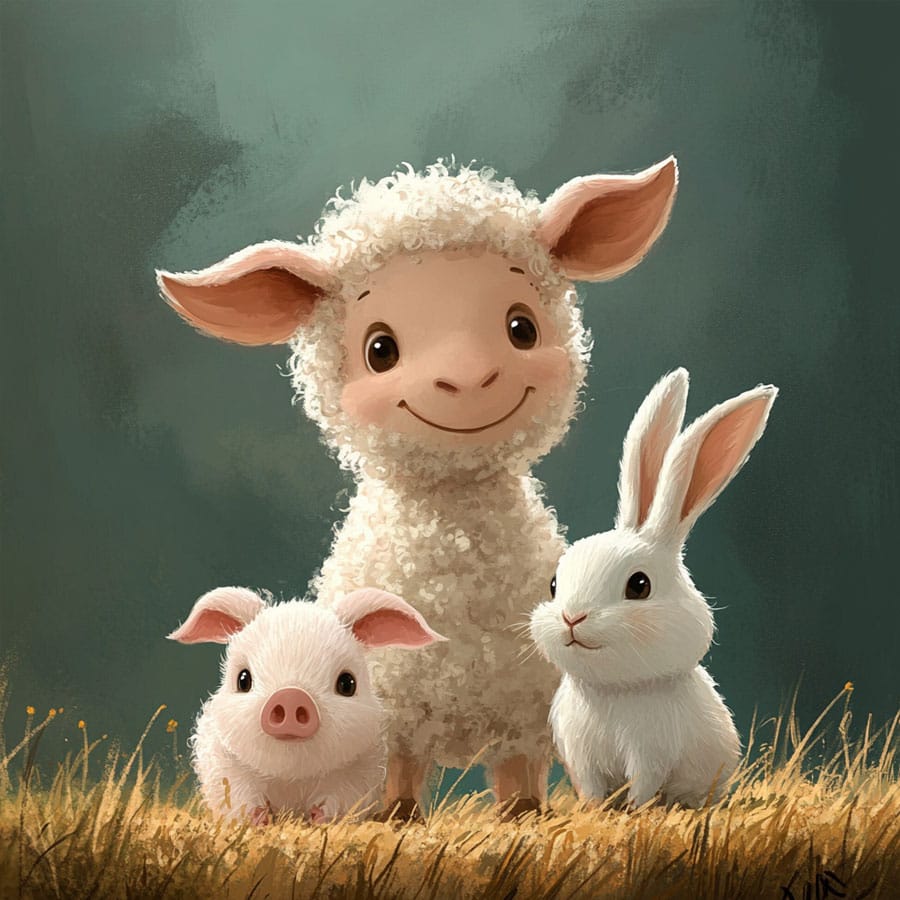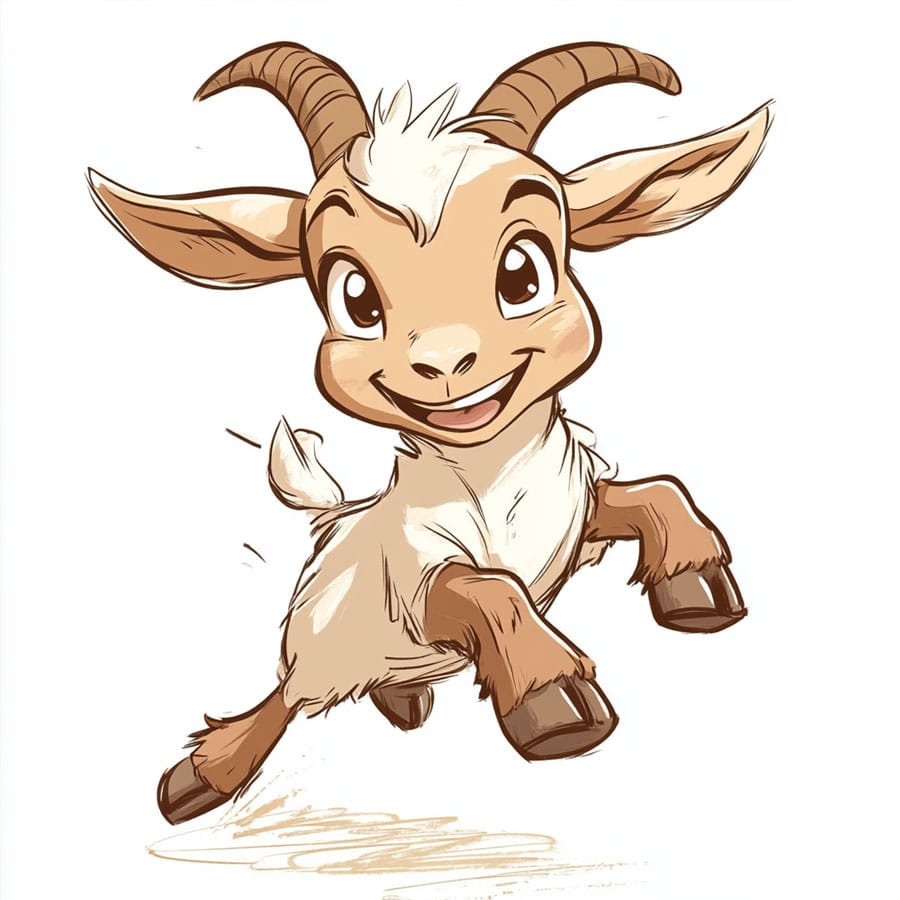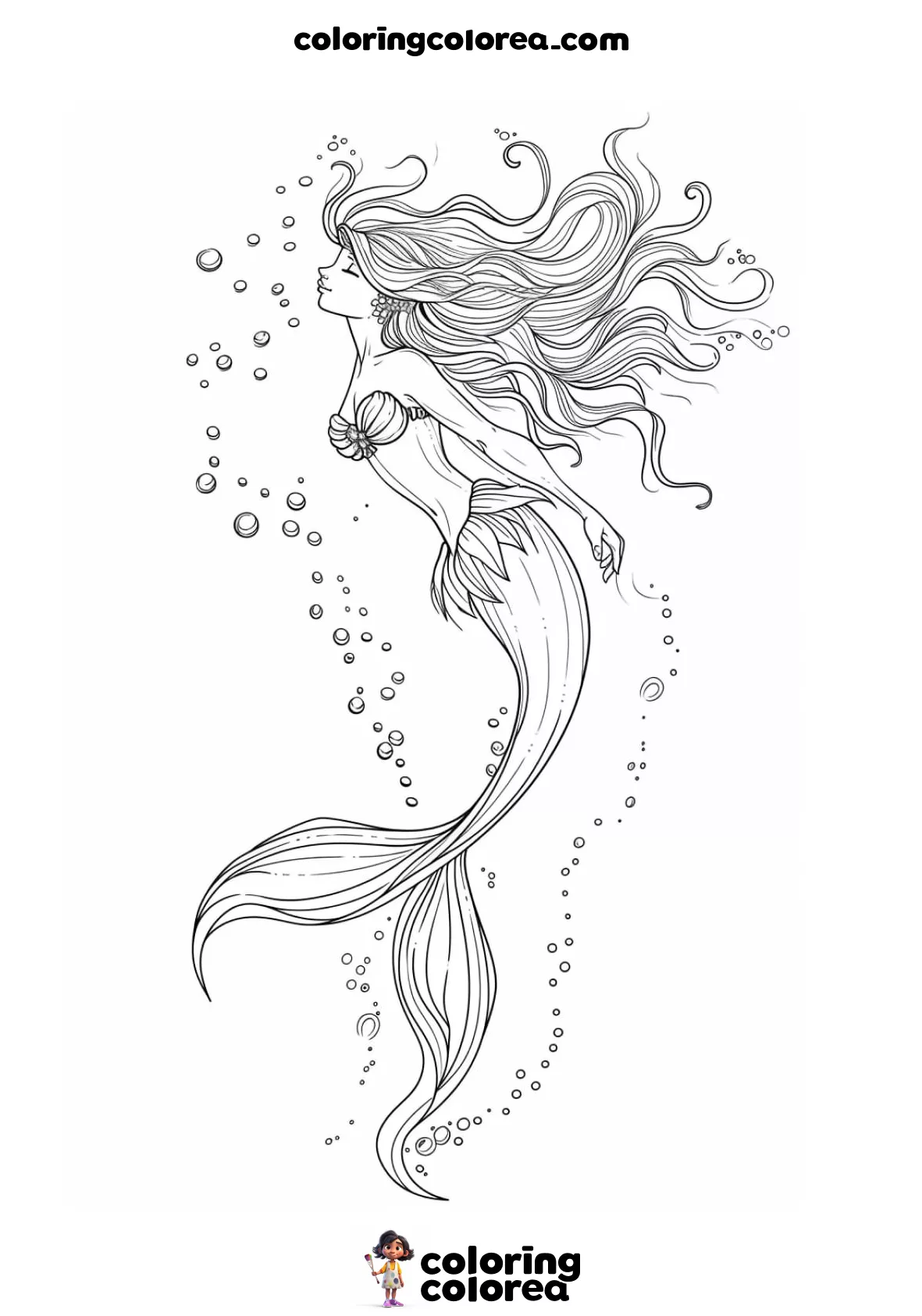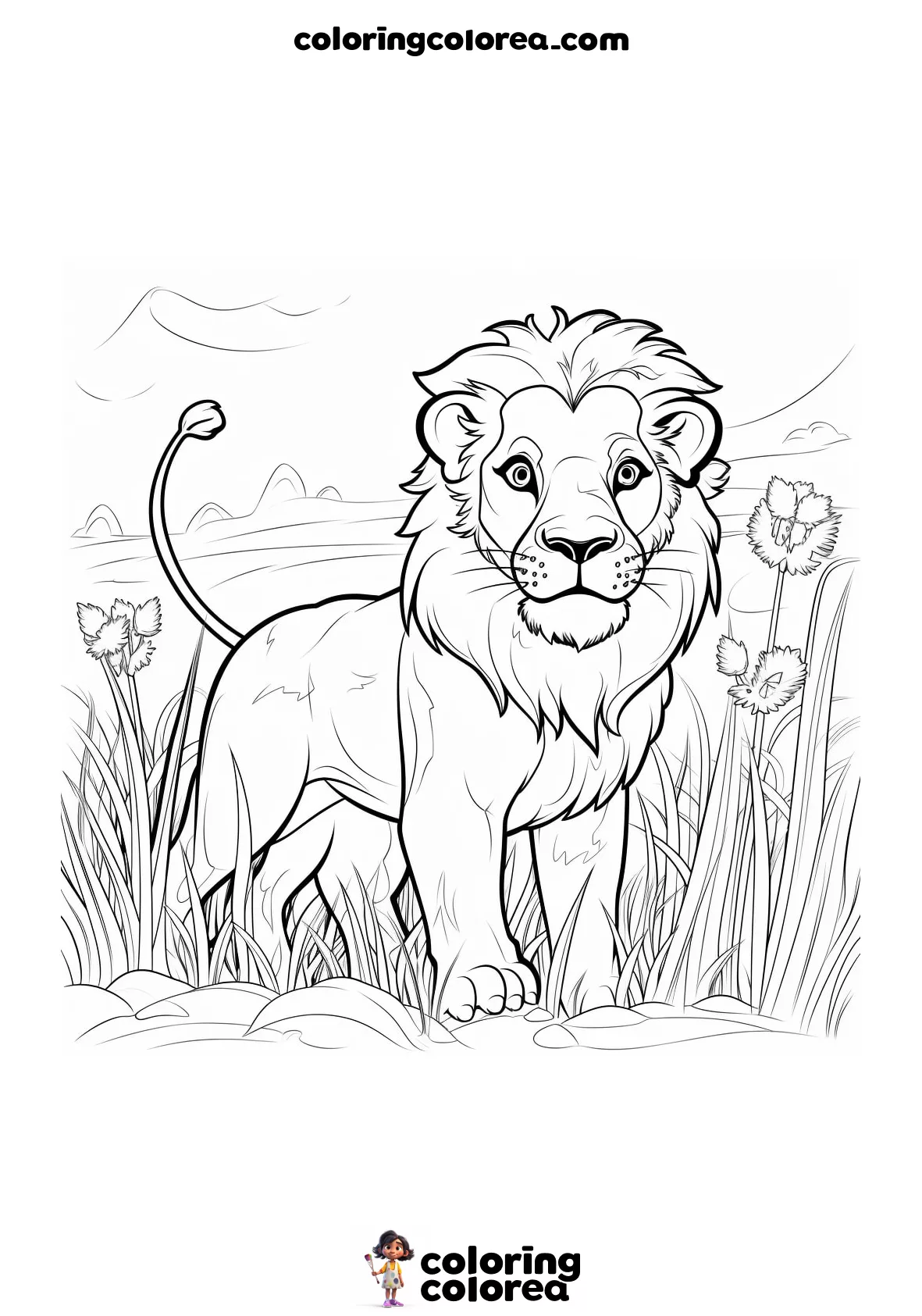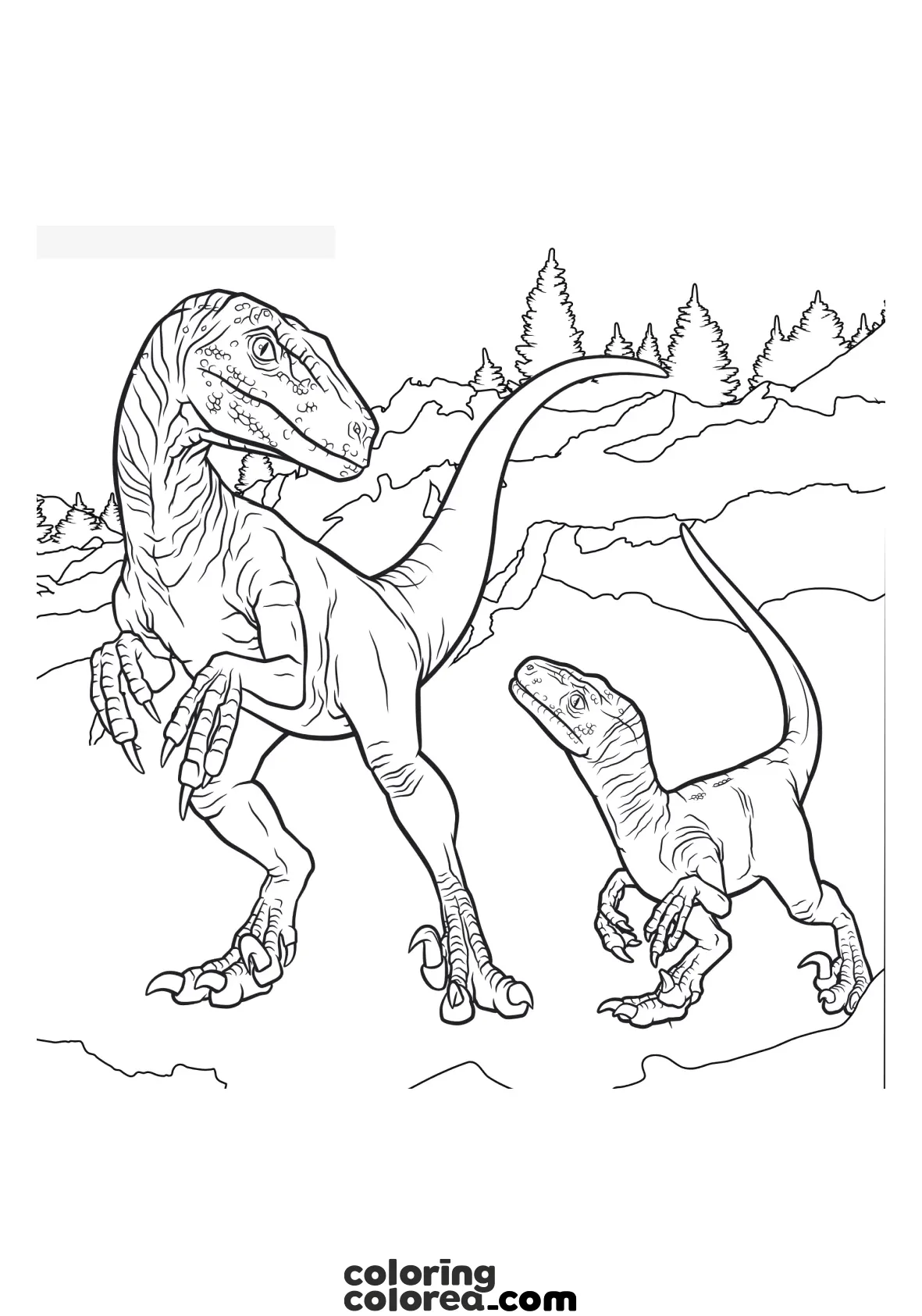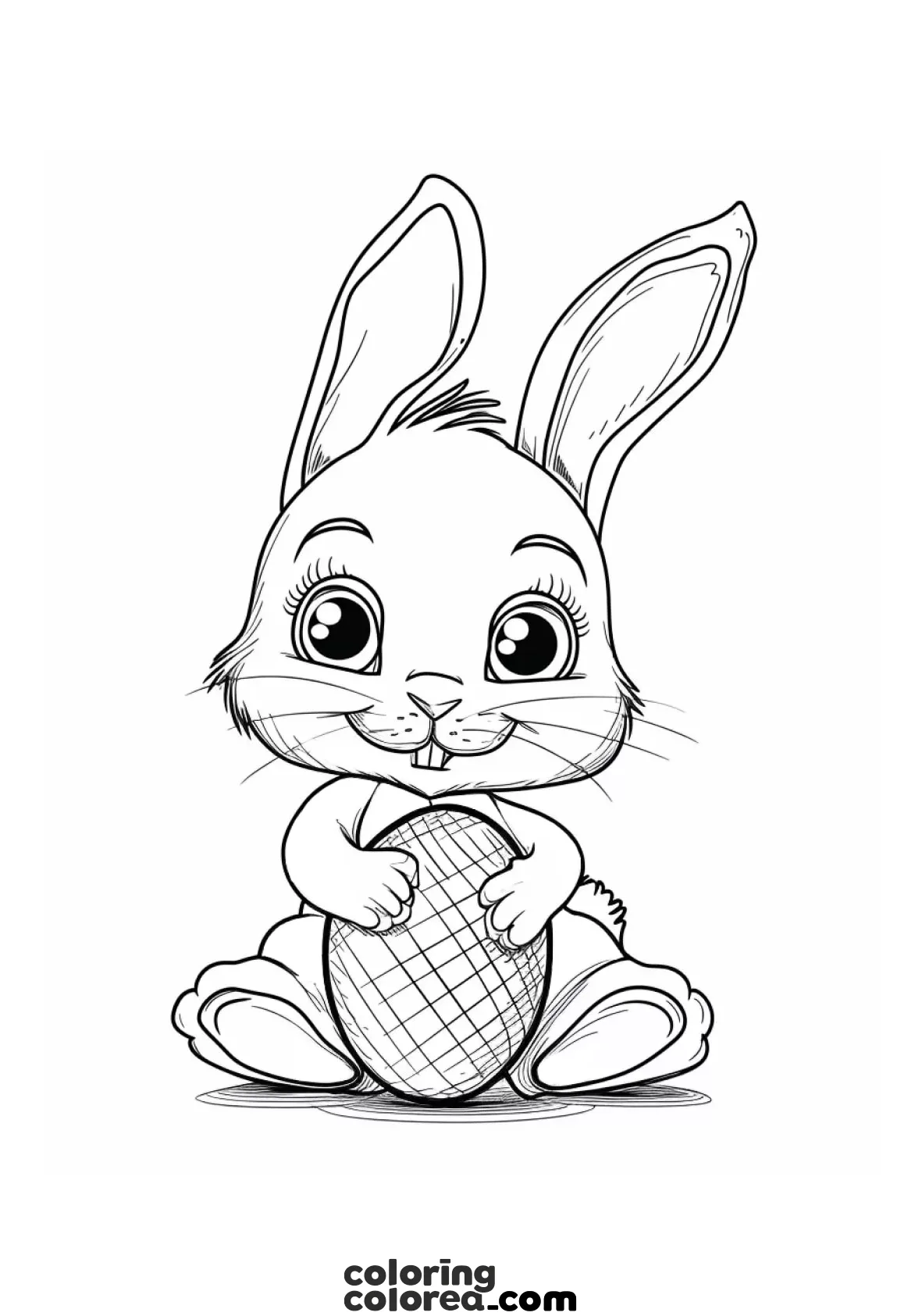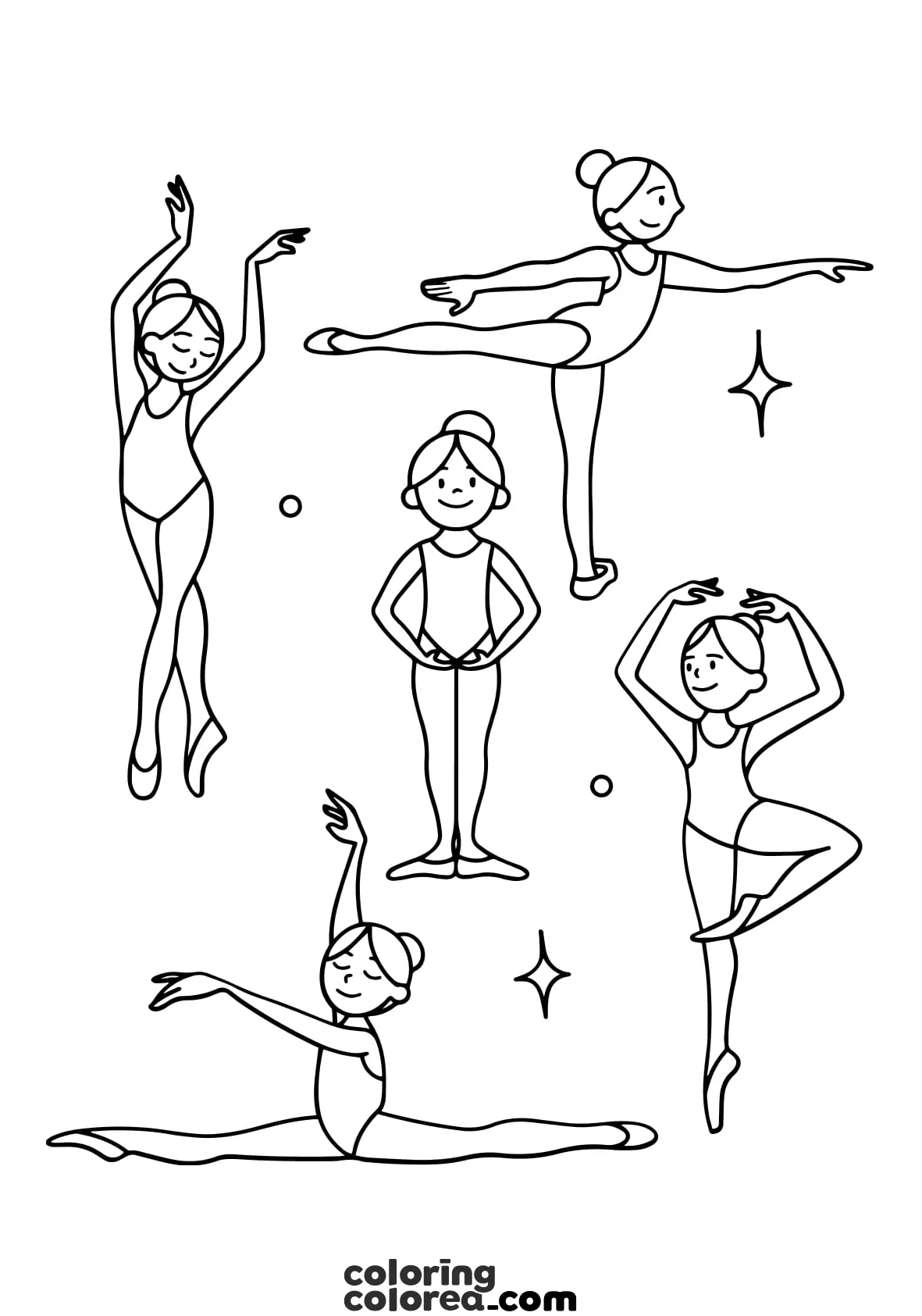Tips and ideas for coloring the goat drawing
To start coloring the goat, we recommend using light brown or gray tones, depending on the breed of goat you want to represent. Details like the muzzle and legs can be colored with darker shades to create a soft contrast. Its big eyes can be colored in warm tones like brown or amber, giving it a friendlier and more adorable look.
The field of flowers around the goat can be filled with vibrant colors: yellows, reds, and oranges for the flowers, while the grass can be a vibrant green. The barn in the background can be colored in traditional red tones with white details, as is typical in many farms, or you can experiment with more creative colors to make it stand out.
The sky and hills in the background can be colored with soft tones: the sky can be light blue, and the clouds white with touches of gray to give them volume. The hills can be a more muted green or even golden, imitating the colors of a sunset landscape.
Inspiration
This drawing captures the essence of a peaceful farm scene, with a cheerful little goat that seems to be enjoying its day in the sun. Farms have been a symbol of simplicity and connection with nature for centuries, and this drawing invites us to immerse ourselves in that serenity. The goat, with its tender expression, reminds us of the beauty and charm of farm animals. Coloring this landscape is not only a way to relax but also a way to connect with rural life.
A curious fact about goats is that they are extremely curious and playful animals, as well as being very intelligent. In many cultures, goats are valued not only for their milk and meat but also for their ability to adapt to different environments. This drawing is a celebration of the joy and simplicity that these animals bring to farm life.





